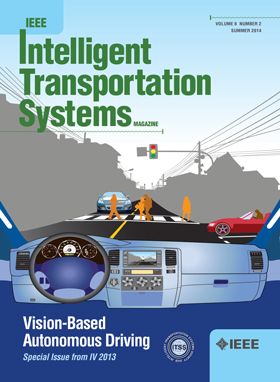An Assignment Method for Multiple Extended Target Tracking With Azimuth Ambiguity Based on Pseudo Measurement Set
IF 7.9
1区 工程技术
Q1 ENGINEERING, CIVIL
IEEE Transactions on Intelligent Transportation Systems
Pub Date : 2024-09-18
DOI:10.1109/TITS.2024.3452647
引用次数: 0
Abstract
Autonomous vehicle technology is rapidly becoming the driving force in the automobile industry. As such, the interest in high-resolution radio detection and ranging (radar) for autonomous vehicle applications is increasing due to its affordability and high angular resolution. However, for Advanced Driver Assistance Systems (ADAS), the challenge of azimuth ambiguity caused by a large physical distance between radar antennas is prevalent. This causes false measurements in a direction different from the target’s true angle due to grating lobes. This challenge increases when extended targets are considered. This paper proposes a Pseudo-3D Assignment (P3DA) method based on a Pseudo Measurement Set (PMS) to resolve azimuth ambiguity in multiple extended target tracking. The proposed method can resolve mono (single) and split (duplicated) azimuth ambiguities common in extended target tracking. The proposed solution uses Lagrangian Relaxation based on a Flexible Search (LR-FS) algorithm to solve the P3DA-PMS problem efficiently. The performance of the proposed algorithm in a typical traffic scenario simulated in Unreal Engine 4, with an ego vehicle mounted with both 2D (unambiguous) and 3D (ambiguous) radars, is evaluated. Simulation and experiment results suggest that the proposed P3DA-PMS-based tracking algorithm can perform better than conventional methods.基于伪测量集的方位角模糊多扩展目标跟踪分配方法
自动驾驶汽车技术正迅速成为汽车行业的驱动力。因此,高分辨率无线电探测和测距(雷达)因其经济实惠和高角度分辨率而越来越受到自动驾驶汽车应用的关注。然而,对于高级驾驶辅助系统(ADAS)来说,雷达天线之间的物理距离过大造成的方位模糊是一个普遍存在的挑战。由于光栅裂片的影响,这会造成与目标真实角度不同方向的错误测量。当考虑到扩展目标时,这一挑战就更大了。本文提出了一种基于伪测量集(PMS)的伪三维赋值(P3DA)方法,以解决多扩展目标跟踪中的方位角模糊问题。所提出的方法可以解决扩展目标跟踪中常见的单(单一)和分(重复)方位角模糊问题。提出的解决方案采用基于灵活搜索(LR-FS)的拉格朗日松弛算法来高效解决 P3DA-PMS 问题。在虚幻引擎 4 中模拟的一个典型交通场景中,评估了所提算法的性能,该场景中的自我车辆同时安装了 2D(不明确)和 3D (模糊)雷达。仿真和实验结果表明,所提出的基于 P3DA-PMS 的跟踪算法比传统方法性能更好。
本文章由计算机程序翻译,如有差异,请以英文原文为准。
求助全文
约1分钟内获得全文
求助全文
来源期刊

IEEE Transactions on Intelligent Transportation Systems
工程技术-工程:电子与电气
CiteScore
14.80
自引率
12.90%
发文量
1872
审稿时长
7.5 months
期刊介绍:
The theoretical, experimental and operational aspects of electrical and electronics engineering and information technologies as applied to Intelligent Transportation Systems (ITS). Intelligent Transportation Systems are defined as those systems utilizing synergistic technologies and systems engineering concepts to develop and improve transportation systems of all kinds. The scope of this interdisciplinary activity includes the promotion, consolidation and coordination of ITS technical activities among IEEE entities, and providing a focus for cooperative activities, both internally and externally.
 求助内容:
求助内容: 应助结果提醒方式:
应助结果提醒方式:


